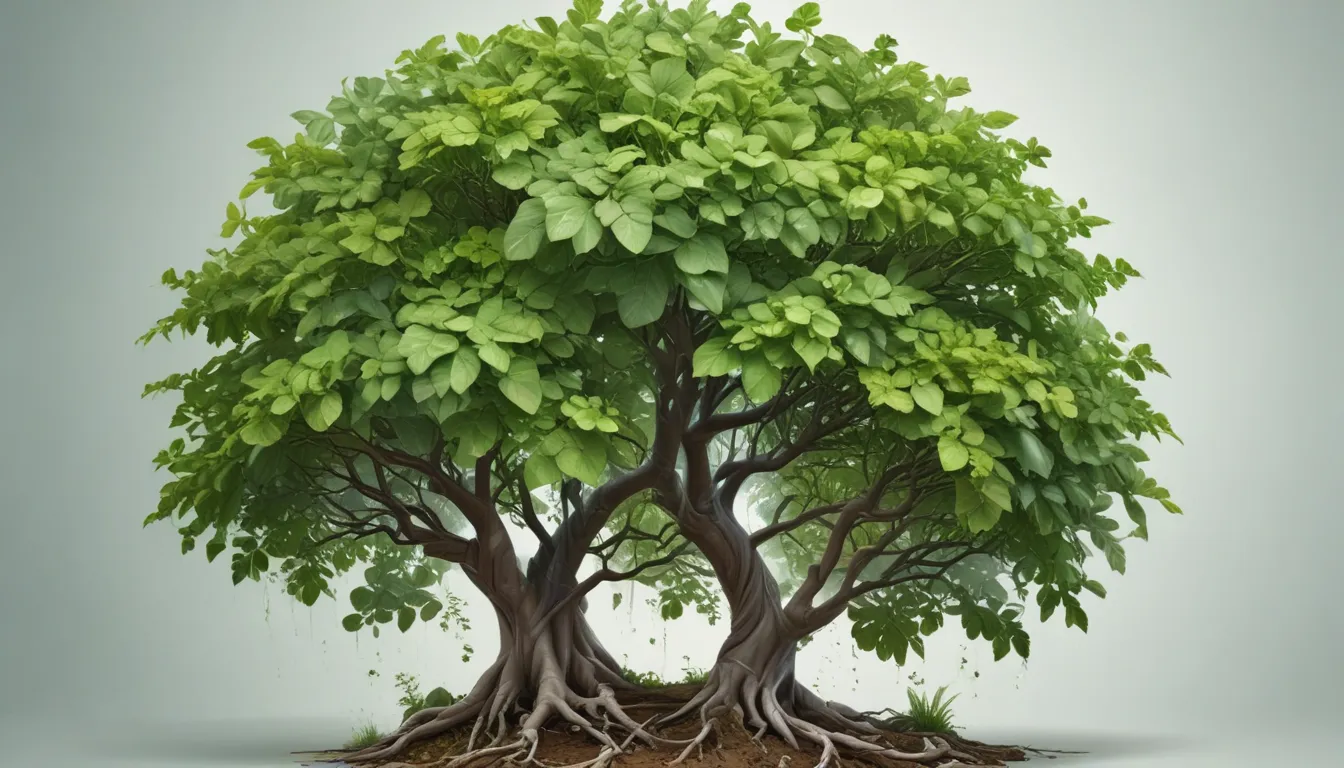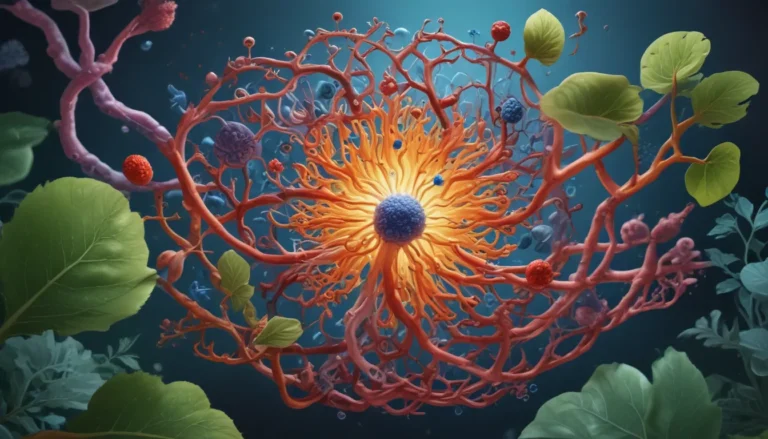A Note About Images: The images used in our articles are for illustration purposes only and may not exactly match the content. They are meant to engage readers, but the text should be relied upon for accurate information.
Biology, a realm of endless wonders, unveils the mysteries of life on Earth. Among its many captivating facets lies the enigmatic process of transpiration. Transpiration, the movement of water from plants to the atmosphere, is a vital cog in the machinery of ecosystems worldwide. While seemingly straightforward, transpiration is a multifaceted phenomenon governed by a myriad of fascinating factors.
In this article, we invite you to embark on a journey through the captivating world of transpiration as we unravel nine intriguing facts about this essential process. From its role in nurturing plant life to its influence on climate dynamics, transpiration is a treasure trove of secrets waiting to be discovered. So, fasten your seatbelts and prepare to be amazed by the wonders of transpiration as we unveil some enthralling facts that will deepen your appreciation for this remarkable biological marvel.
Unveiling the Essentials of Transpiration:
- Transpiration is Vital for Plants: Transpiration, the process by which plants release water vapor through their leaves, is indispensable for their well-being. It aids in temperature regulation, nutrient absorption, and cell structure maintenance.
- Stomata: The Guardians of Transpiration: Stomata, tiny openings on leaf surfaces, oversee the rate of transpiration by regulating the movement of gases and water vapor. They respond to environmental cues such as light, temperature, and humidity.
- Nutrient Absorption through Transpiration: The loss of water during transpiration creates a suction force that facilitates the uptake of water and nutrients from the soil into plant roots, a process known as root pressure.
- Aiding the Water Cycle: Transpiration is a key player in the water cycle. Water vapor released by plants ascends into the atmosphere, eventually condensing to form clouds, leading to precipitation that sustains water sources and life on Earth.
- Cooling Mechanism for Plants: Through transpiration, plants release water vapor into the air, effectively cooling their leaves and regulating their temperature, especially crucial in hot and arid climates.
Illuminating the Interconnectedness of Transpiration:
- Influencing Photosynthesis: Transpiration and photosynthesis, the sunlight-to-energy conversion process in plants, are intertwined. Open stomata allow for the uptake of carbon dioxide for photosynthesis while enabling water loss through transpiration, directly affecting photosynthetic rates.
- Environmental Factors at Play: Various environmental elements like temperature, humidity, wind, and light intensity influence transpiration rates. High temperatures and low humidity accelerate transpiration, while wind increases water loss from leaves.
- Measuring Transpiration: The rate of transpiration in plants can be quantified using a device called a potometer. This apparatus features a glass tube connected to a plant stem, with a water reservoir, allowing researchers to measure water movement as it exits through transpiration.
- Diverse Transpiration Rates: Different plant species exhibit varying rates of transpiration due to factors like leaf structure, surface area, and specialized adaptations such as waxy cuticles or stomatal density, all of which influence water loss rates.
As we unravel the mysteries of transpiration, we realize its profound impact on the intricate web of life on our planet. By comprehending this process, we not only enrich our understanding of plant physiology but also cultivate a profound respect for nature’s interconnectedness and the critical role water plays in sustaining life on Earth.
Exploring the Boundless Potential of Transpiration:
Transpiration, a captivating biological phenomenon where plants emit water vapor into the atmosphere, holds the key to plant health, nutrient uptake, and temperature regulation. As we journey through the realm of transpiration, we unearth nine intriguing facts that shed light on its complexity and significance.
From the staggering volume of water transpired by plants to the profound implications of humidity on transpiration rates, these facts unveil the intricate tapestry of this vital biological process. Transpiration transcends individual plants, impacting global climate patterns and water cycles, making it a subject of immense scientific interest and environmental importance.
Understanding the intricacies of transpiration empowers scientists and researchers to devise strategies for efficient irrigation, sustainable crop management, and responsible water resource management. This process not only influences plant growth but also shapes our environment and ecosystems on a global scale, underscoring the far-reaching implications of transpiration.
FAQs: Unveiling Key Insights on Transpiration
-
What is transpiration?
Transpiration is the process where plants release water vapor through their leaves into the atmosphere. -
Why is transpiration important?
Transpiration aids in regulating plant temperature, nutrient transport, and water balance within plants. -
How does transpiration affect the environment?
Transpiration plays a vital role in the water cycle, influencing climate patterns and precipitation distribution locally and globally. -
What factors influence transpiration rates?
Temperature, humidity, light intensity, wind speed, and soil water availability are factors that impact transpiration rates. -
Can transpiration be controlled?
While transpiration is a natural process, it can be influenced through plant management techniques like irrigation control and environmental adjustments. -
How does transpiration impact crop productivity?
Transpiration directly affects water availability for crops, emphasizing the need for efficient water management for optimal growth and yield. -
Does transpiration occur at night?
Transpiration rates typically decrease at night due to stomatal closure, limiting gas exchange on the leaf surface. -
Can transpiration harm plants?
Excessive transpiration without adequate water uptake can lead to dehydration and wilting, posing risks to plant survival. -
How can studying transpiration aid in environmental conservation?
Insights from transpiration studies can inform sustainable water management strategies, contributing to water conservation in agricultural and natural ecosystems.
Transpiration’s enigmatic allure captivates plant enthusiasts, offering a gateway to explore the wonders of botanical life. While transpiration remains a compelling subject, other captivating topics beckon exploration, delving into historical events and ancient civilizations. By satisfying your curiosity and unearthing the secrets of the past, you enrich your understanding of the world’s intricate tapestry and marvel at the stories etched in bygone eras and civilizations.
Embracing Trustworthy Knowledge and Engaging Content
Our dedication to delivering reliable and captivating content drives our commitment to providing you with a wealth of diverse insights and information. Each fact contributed by real users undergoes meticulous review by our dedicated editors, ensuring the highest standards of accuracy and authenticity. Trust in our unwavering commitment to quality and authenticity as you embark on a journey of exploration and discovery, uncovering the wonders of the world around us.






